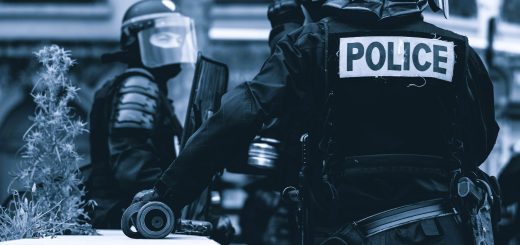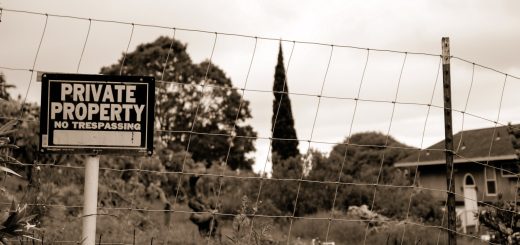Police Officers Infringed Rights with Selective Searches during G20: Figueiras v Toronto (Police Services Board)
In Figueiras v Toronto (Police Services Board), 2015 ONCA 208, the scope of common law police powers were at issue in regards to their conduct with protesters during the 2010 G20 summit in Toronto. In what has been hailed a victory for G20 demonstrators, the Ontario Court of Appeal granted Mr. Figueiras’ appeal in holding that officers had infringed his Charter right to freedom of expression and his common law liberty rights, and had committed the tort of battery.
Facts
Paul Figueiras had come to the downtown area of Toronto with friends during the G20 summit in order to demonstrate in support of animal rights. Mr. Figueiras and his friends were near University Avenue and King Street when they were stopped by police officers and told that in order to proceed south on University Avenue, they would have to allow their bags to be searched.
Mr. Figueiras refused to consent to the search and explained that the search violated his civil rights. One of the officers made comments such as, “there’s no civil rights here in this area” and, “this ain’t Canada right now.” The incident was filmed on video and showed officers searching through the bags of Mr. Figueiras’ friends.
When Mr. Figueiras refused to consent to a search of his bag, Sargent Charlebois wrapped his arm around Mr. Figueiras’ shoulder, grabbed his shirt and said, “you don’t get a choice.” He then pushed Mr. Figueiras and told him to “get moving.”
Sgt. Charlebois also commented on the phone number written on Mr. Figueiras’ arm, that it was “a sign of the people … causing trouble.” Sgt. Charlebois stated, “you’ve got a lawyer’s number on your arm, alright? So either we look in the bag, or you get stepping, buddy.” Mr. Figueiras eventually decided not to protest and returned home.
Mr. Figueiras applied for a declaration that his freedom of expression, peaceful assembly, and liberty rights under ss. 2(b), 2(c), and 7 of the Canadian Charter of Rights and Freedoms had been violated. Mr. Figueiras also made a claim in tort for battery against Sgt. Charlebois, as a result of the physical altercation that had occurred.
During his testimony, Sgt. Charlebois explained that he and his five-officer team had decided to stop anyone who “looked like a demonstrator” and require them to submit to a search of their bags in order to enter the area. However, on cross-examination he acknowledged that he had not been instructed to implement this tactic and officers in other areas had not taken similar actions. As a result, many people were permitted to enter the area without submitting to a search. Despite the variation in enforcement, it was held not to be an arbitrary police action or abuse of authority by the application judge.
Both parties to the application agreed that the officer did not have the statutory authority to require consent to a search in order to walk down a public street. Thus, the issue in dispute was whether the officers’ actions were authorized under the ancillary powers doctrine under the common law.
Judicial History and the Findings of the Application Judge
The application judge dismissed Mr. Figueiras’ application, and held that the officer’s conduct was authorized under the ancillary police powers test from R v Waterfield, [1963] 2 All ER 659 (CCA) [Waterfield]:
(1) Does the police conduct in question fall within the general scope of any duty imposed on the officer by statute or common law?
(2) If so, in the circumstances of this case, did the execution of the police conduct in question involve a justifiable use of the powers associated with the engaged statutory or common law duty?
Both parties agreed that the officer’s conduct satisfied the first stage of the test, however the second stage of the test remained at issue. The application judge concluded that preventing demonstrators from proceeding lest they submit to a search was a minimal intrusion on the rights of the demonstrators. In reaching this decision, the application judge relied on the officers’ duty to preserve the peace and the power to cordon off areas to protect foreign dignitaries as found to exist in Knowlton v R, [1974] SCR 443.
In regards to Mr. Figueiras’ claim that his ss. 2(b) and 2(c) rights had been infringed, the application judge held that there could be no violation of these rights, as the police conduct was found to be lawful. The judge also held that if a breach of the Charter had been found, it would have also withstood the section 1 test as a reasonable limit on Mr. Figueiras’ rights.
In regards to the claim for battery, it was held not to have surpassed the de minimis level. In addition, the conduct was found to be justified under s. 25 of the Criminal Code, RSC 1985, c C-46 [the Code], a section which permits a peace officer to use “as much force as is necessary” in the course of law enforcement, provided that the actions taken are on reasonable grounds and authorized by law.
The main issues on appeal were whether the application judge erred in the application of the Waterfield test and in the conclusion that police have the common law power to restrict Mr. Figueiras’s movements and right to protest. A secondary issue was whether the application judge erred by holding that Sgt. Charlebois had not committed battery. The appeal was allowed and a declaration was granted that the officers had infringed Mr. Figueiras’ Charter right to freedom of expression, his common law liberty rights and had committed the tort of battery.
Reasoning in the Court of Appeal
In reaching this decision, Justice Rouleau held that Mr. Figueiras’ s. 2(b) freedom of expression and common law rights were engaged, and it was unnecessary to address the alleged violations of Mr. Figueiras’ ss. 2(c) and 7 rights.
Justice Rouleau noted how the Supreme Court has altered the Waterfield test over time to integrate the common law with Charter-protected rights in order to define the limits of common law police powers. Justice Rouleau then went on to discuss the Waterfield test in relation to the Oakes test required under s. 1 of the Charter and the similarities between the two tests in defining the scope of rights. It was noted that s. 1 of the Charter had no application and could not be used to justify the rights breaches that occurred as the infringement of Mr. Figueiras’ rights were not prescribed by law.
Justice Rouleau reasoned that two threshold issues needed to be addressed before undertaking the Waterfield analysis: defining the police power at issue; and, identifying the liberty interests in question.
In terms of defining the police power, it was noted that it was not a “straightforward” issue, as various types of powers exist. Justice Rouleau noted that the case law demonstrates that in the absence of statutory authority, the police power to limit access to certain areas is not a general power; but rather confined to certain emergency occurrences, such as fire, flood, car crashes, or crime scenes.
In contrast, the power exercised by Sgt. Charlebois and the members of his team was used not just to restrict access to an area, but also to selectively compel people to submit to a search in order to enter the area. In addition, this power did not come from any statute or regulation and was found to be a significant deviation from any situation recognized under common law.
In terms of the liberty interests at stake, it was noted that Mr. Figueiras had requested declaratory relief based on his ss. 2(b), 2(c), and 7 Charter rights, whereas the bulk of the application judge’s reasons centered on s. 9—an issue that was raised by the respondent. However, it was determined by Justice Rouleau that the s. 9 right not to be arbitrarily detained was not at issue, as Mr. Figueiras was free to walk away from the officers, just not in the direction he preferred. Justice Rouleau also noted that the s. 8 right to be free from unreasonable search and seizure was not engaged either, as no search had actually taken place.
Thus, the real issue was the s. 2(b) freedom of expression right, as it was found that Mr. Figueiras “felt sufficiently intimidated” by the officers that he abandoned his attempt to protest. In making this determination, Justice Rouleau applied the three-step test from Irwin Toy Ltd v Quebec (Attorney General), [1989] 1 SCR 927:
(1) The plaintiff is engaged in expressive activity;
(2) Nothing about the method or location of the expressive activity removes it from the scope of protected expression; and
(3) The impugned government action has either the purpose or the effect of restricting freedom of expression.
It was noted that Mr. Figueiras met the first two stages of the test quite easily, however it was the third part that required the Court to look at the “intent” and the “effects” of the government activity that imposes a limit on free expression. Thus, Justice Rouleau concluded that because Sgt. Charlebois admitted that his intent was to stop anyone who looked like a protester and impose an extraordinary condition upon them, the third step of the Irwin Toy test was satisfied.
The targeting of those who looked like protesters for searches also factored into the balancing exercise under the Waterfield test, as it was found that the application judge had misinterpreted the concept of minimal impairment to mean minimizing the amount of people targeted, rather than minimizing the impairment of rights for those targeted. The police conduct in question was found to be unnecessary to keep the peace and not rationally connected to the performance of police duties. As such, the police power fell short of meeting the Waterfield test when weighed against the infringement of the Charter rights.
As a result, Mr. Figueiras was granted the declaratory relief sought and the recognition that the respondents had violated his common law rights to travel unimpeded on a public highway. In reaching this decision Justice Rouleau noted that Sgt. Charlebois lacked the common law police power to stop Mr. Figueiras in order to search him, and he therefore could not rely on s. 25(1) of the Code to shield himself from civil liability for the tort of battery.
Conclusion
This case represents one of the few resolutions holding police accountable for the mistreatment of protesters and bystanders during the G20 protests. This case also helps define the scope of police powers and explain the interaction of the common law with the Charter in this regard. As such, the case represents a victory for civil liberties and Charter rights, and allows some accountability for police actions during the G20 in which so many saw their rights violated. Given the recent certification of a class action suit of those who experienced rights violations during the G20 protest, it is hopeful that the instant case is just the beginning of justice for those affected.







Join the conversation